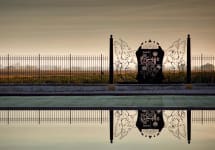Chateau Pichon-Longueville Baron 2014
-
James
Suckling -
Wilfred
Wong -
Jeb
Dunnuck - Decanter
-
Robert
Parker -
Wine
Spectator


Product Details
Your Rating
Somm Note
Winemaker Notes
Professional Ratings
-
James Suckling
Irony and smoky intensity on the very youthful nose. Really rich and tannic, but as it flows over your palate it becomes more and more suave and complex. This is a concentrated, long-term wine that demands some patience but should richly reward it. Try in 2022.
-
Wilfred Wong of Wine.com
The leader of the pack, the 2014 Chateau Pichon Baron appears to be the leader of the pack as it looks to capture the title of "Wine of the Year." This is such a solid, youthful wine and among one of chateaux' best. Very expressive, with great density, there is so much fine-tuned, ripe fruit here; rounded out with well though of oak treatment, when all is said and done and the wine has finished its time in the barrel, the wine may well be on a platform of greatness. Range 93-95 (Tasted: May 30, 2015, San Francisco, CA)
-
Jeb Dunnuck
More reserved and classically styled than the 2015, the 2014 Pichon-Longueville Baron is nevertheless a beautiful wine and up with the top wines in the vintage. Possessing deep ruby/plum color as well as terrific notes of blackberries, smoke tobacco, graphite, chocolate, and hints of cedar, it has a regal, understated, yet concentrated style that builds with time in the glass. Medium to full-bodied, ripe, layered, and beautifully textured, it’s a classy wine from this estate that’s going to benefit from 3-4 years of bottle age and keep for two decades.
-
Decanter
From vines that have reached an average of 35 years old, this is rich, firm and broad-shouldered, with dark bilberry fruits overlaid with steely flint edges. We're in film noir territory here: think The Third Man's Harry Lime slipping under the railway arches. After five minutes in the glass there's a floral note curling upwards. Excellent.
-
Robert Parker's Wine Advocate
The 2014 Pichon-Longueville Baron was broody at first, as if a big "No Entry" sign had been placed in front of the aromatics. But peeking underneath are some wonderful blackberry, cedar and graphite aromas that just sing of Pauillac and exude typicity. The palate is medium-bodied with very impressive depth and concentration on the entry, a superb line of acidity and outstanding precision on the finish. This is clearly fulfilling its potential that it showed from barrel. The only drawback is that it might be unfairly overshadowed by the 2015 Pichon Baron! This will be one of those over-performing Pauillacs, perhaps like the 1990 Pichon Baron, that will delight for years to come.
-
Wine Spectator
A solid rendering, with an ample core of cassis, cherry preserves and plum cake backed by energetic, brambly tannins. A singed apple wood accent on the finish adds range. Shows good cut throughout. Best from 2020 through 2035.
Other Vintages
2022-
Jeb
Dunnuck -
Robert
Parker -
James
Suckling - Decanter
-
James
Suckling -
Robert
Parker -
Jeb
Dunnuck - Decanter
-
James
Suckling -
Jeb
Dunnuck - Decanter
- Vinous
-
Wine
Enthusiast -
Robert
Parker -
Wilfred
Wong -
Wine
Spectator
-
Wine
Enthusiast -
Wilfred
Wong - Decanter
-
Robert
Parker -
James
Suckling -
Jeb
Dunnuck -
Wine
Spectator
-
Wilfred
Wong -
Wine
Enthusiast - Decanter
-
Jeb
Dunnuck -
Robert
Parker -
Wine
Spectator -
James
Suckling
-
Wine
Enthusiast -
Jeb
Dunnuck -
Robert
Parker -
Wine
Spectator -
James
Suckling - Decanter
- Decanter
-
James
Suckling -
Robert
Parker -
Wine
Enthusiast -
Jeb
Dunnuck -
Wine
Spectator
- Decanter
-
Wine
Enthusiast -
Jeb
Dunnuck -
Robert
Parker -
Wilfred
Wong -
James
Suckling -
Wine
Spectator -
Connoisseurs'
Guide
-
James
Suckling -
Jeb
Dunnuck -
Robert
Parker -
Wine
Spectator
-
Wine
Enthusiast -
Wine
Spectator -
James
Suckling -
Robert
Parker -
Jeb
Dunnuck
-
Jeb
Dunnuck -
Wine
Enthusiast -
Robert
Parker -
Wine
Spectator -
James
Suckling
- Decanter
-
Robert
Parker -
Wine
Enthusiast -
Wine
Spectator -
James
Suckling
-
Robert
Parker -
James
Suckling -
Wine
Spectator
-
Robert
Parker
-
James
Suckling -
Connoisseurs'
Guide -
Wine
Spectator -
Robert
Parker
-
Wine &
Spirits -
Connoisseurs'
Guide -
Jeb
Dunnuck -
Wine
Spectator -
Robert
Parker
-
Wine
Enthusiast -
Wine &
Spirits -
Robert
Parker
-
James
Suckling -
Wine
Spectator -
Robert
Parker -
Wine
Enthusiast
-
Wine
Spectator
-
Robert
Parker -
Wine
Spectator -
Wilfred
Wong
-
Jeb
Dunnuck -
Robert
Parker -
James
Suckling -
Wine
Spectator -
Wine
Enthusiast
-
Robert
Parker
-
Wine &
Spirits -
Robert
Parker
-
Robert
Parker -
Wine
Spectator
-
Robert
Parker -
Wine
Spectator
-
Robert
Parker - Decanter
-
Wine
Spectator
-
James
Suckling -
Wine
Spectator -
Robert
Parker
-
Wine
Spectator -
Robert
Parker

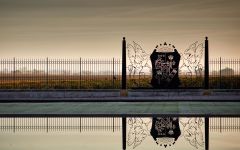

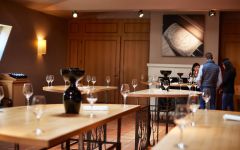
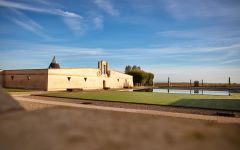
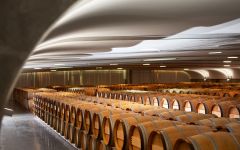
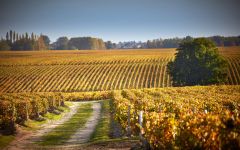
The Estate was founded in the late 17th Century. This period was known as the Grand Siecle, or "great century", in reference to Louis XIV's 1661 accession to the French throne. In 1689 Pierre Desmezures de Rauzan, an influential wine merchant and steward of the prestigious Latour and and Margaux estates, bought plots of vines close to the Latour estate to create Enclos Rauzan. These vines were part of his daughter Therese's dowry when she married Baron Jacques Pichon de Longueville in 1694, the year in which the Pichon Baron estate was founded. An illustrious estate, with an enduring reputation, was born. It remained in the same family for generations.
In 1850 the property was divided in two. Baron Raoul Pichon de Longueville's section became the Pichon Baron estate. The second section, belonging to his three sisters, became Pichon Comtesse. Baron Raoul was proud of his prestigious property, and in 1851 he commissioned the imposing chateau inspired by Renaissance architecture that we know today. This uniquely charming and romantic chateau, with its two emblematic turrets, has stood proudly at the vineyard's heart ever since. During the Universal Exhibition of 1855, the wine was classed as a Second Grand Cru Classe according to the ranking system requested by Emperor Napoleon III, who wished to showcase Bordeaux's great wines. In 1933, the Pichon de Longueville family sold the property to the Bouteiller family, who managed the chateau for over 50 years.
In 1987 the estate was bought by AXA Millesimes, whose aim is to enable great wines from the vineyards with a glorious past to achieve their full potential. An architectural competition was launched in collaboration with the Paris Pompidou Centre to provide the estate with new operational buildings. The comprehensive reconstruction of the fermenting room and cellar, and renovation of the chateau, began in 1988. Since then, the 19th century chateau's image has been
reflected in an ornamental pool stretching majestically before it.. And since 2008, its silvery expanse conceals an underground cellar, reminiscent of Jules Verne's Nautilus, with view of both the water and sky. The barrel cellar complements a production process in which excellence is paramount, in the finest tradition of great Pauillac wines.

One of the world’s most classic and popular styles of red wine, Bordeaux-inspired blends have spread from their homeland in France to nearly every corner of the New World. Typically based on either Cabernet Sauvignon or Merlot and supported by Cabernet Franc, Malbec and Petit Verdot, the best of these are densely hued, fragrant, full of fruit and boast a structure that begs for cellar time. Somm Secret—Blends from Bordeaux are generally earthier compared to those from the New World, which tend to be fruit-dominant.

The leader on the Left Bank in number of first growth classified producers within its boundaries, Pauillac has more than any of the other appellations, at three of the five. Chateau Lafite Rothschild and Mouton Rothschild border St. Estephe on its northern end and Chateau Latour is at Pauillac’s southern end, bordering St. Julien.
While the first growths are certainly some of the better producers of the Left Bank, today they often compete with some of the “lower ranked” producers (second, third, fourth, fifth growth) in quality and value. The Left Bank of Bordeaux subscribes to an arguably outdated method of classification that goes back to 1855. The finest chateaux in that year were judged on the basis of reputation and trading price; changes in rank since then have been miniscule at best. Today producers such as Chateau Pontet-Canet, Chateau Grand Puy-Lacoste, Chateau Lynch-Bages, among others (all fifth growth) offer some of the most outstanding wines in all of Bordeaux.
Defining characteristics of fine wines from Pauillac (i.e. Cabernet-based Bordeaux Blends) include inky and juicy blackcurrant, cedar or cigar box and plush or chalky tannins.
Layers of gravel in the Pauillac region are key to its wines’ character and quality. The layers offer excellent drainage in the relatively flat topography of the region allowing water to run off into “jalles” or streams, which subsequently flow off into the Gironde.
